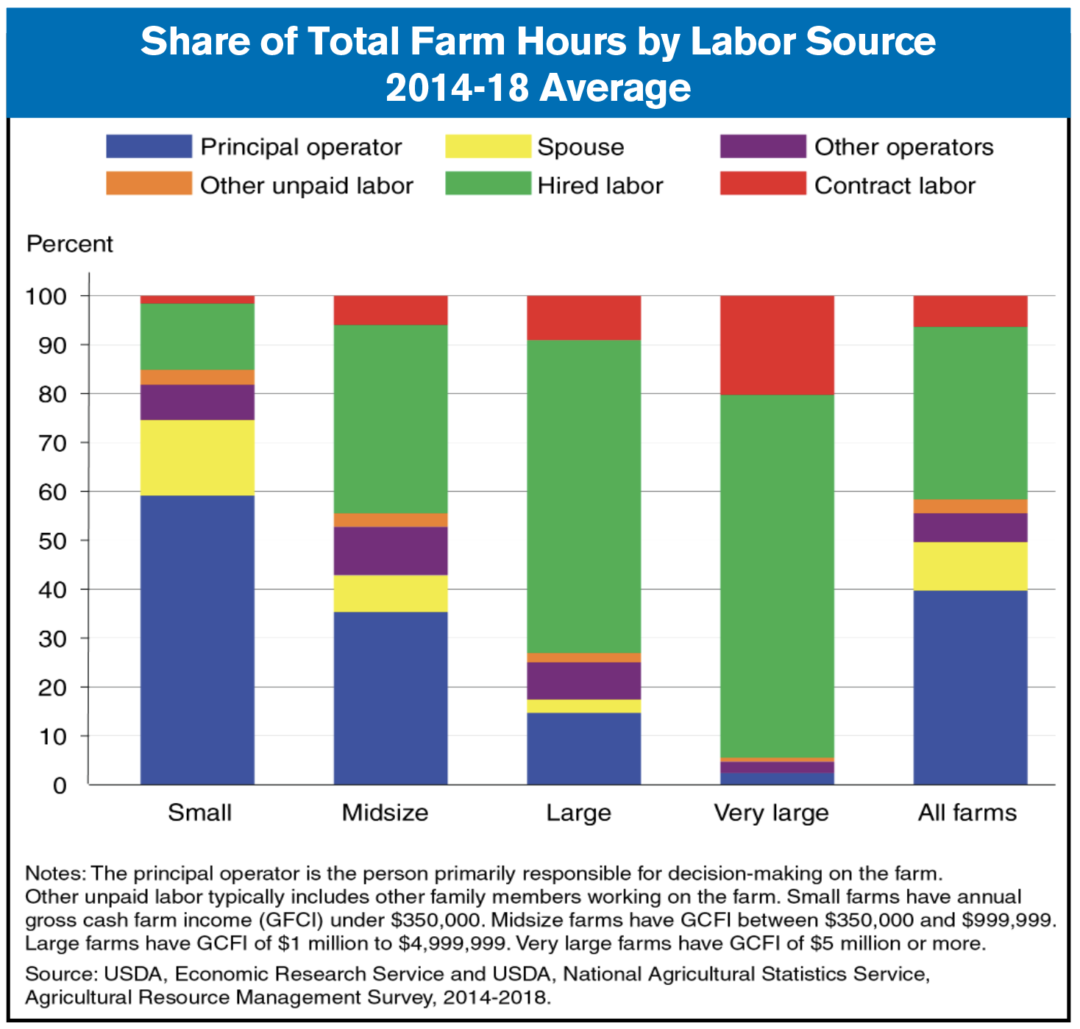The U.S. agricultural workforce consists of a mixture of two groups of workers: (1) self-employed farm operators and their family members, referred to as “unpaid labor” because their remuneration comes out of farm profits rather than a wage; and (2) paid labor such as hired and contract workers that receive wages. Overall, between 2014-2018, U.S. farms used about 59% operator, spouse and family labor, compared to 41% paid labor. However, farms of different sizes relied on different mixes of labor.
Principal operators and their spouses provided most of the labor hours (76%) used on small farms, those with annual gross cash farm income (GCFI) under $350,000. That share fell to 43% on midsize farms (GCFI between $350,000-$999,999), 17% on large farms (GCFI between $1 million-$4,999,999), and 2% on very large farms (GCFI of $5 million or more). Large and very large farms relied most on hired labor, which provided 64-74% of the labor hours on those farms, respectively. By comparison, hired labor provided about 12% of labor hours on small farms and 39% on midsize farms. Contract laborers were important on very large farms (particularly in fruit and vegetable operations), contributing 20% of labor hours.
This chart updates data found in the March 2018 ERS report, Three Decades of Consolidation in U.S. Agriculture.





Post a comment
Report Abusive Comment